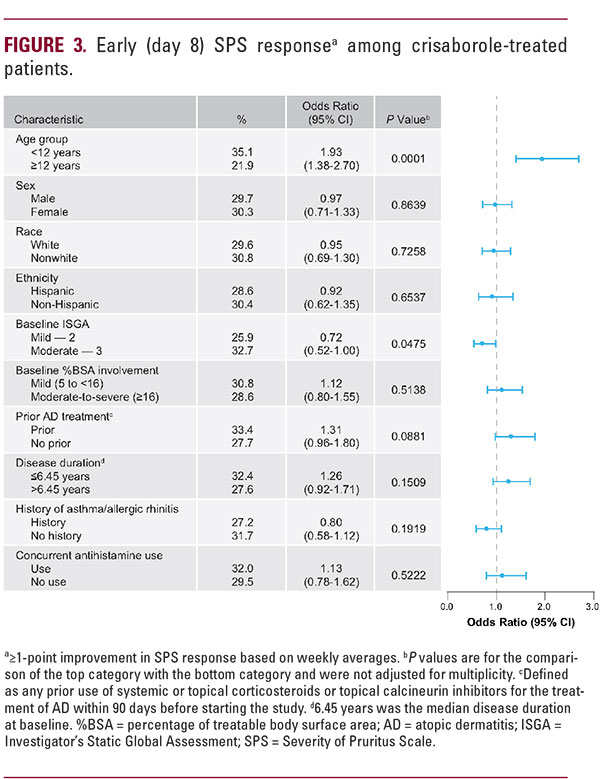


was dependent on whether a ≥2-grade improvement from baseline in ISGA severity was included in the definition. In terms of SPS response, only patients aged <12 years and patients with moderate disease were likely to be early responders, with no other baseline characteristics predicting early response. Patients treated with crisaborole who achieved early (day 8) ISGA success, ISGA clear or almost clear, or SPS response were more likely to achieve sustained response at day 29, suggesting that early treatment response may be an important prognostic factor for ongoing treatment response.
In the current analysis, 2 ISGA early response definitions were included: ISGA success and ISGA clear or almost clear. The primary definition of treatment success for registration studies has focused on achieving ISGA success due to regulatory guidance; however, ISGA success excludes many patients with mild AD at baseline since in order to attain ≥2-grade improvement from baseline, patients with mild ISGA [2] at baseline must achieve clear ISGA [0], which is 100% improvement and can be difficult to achieve in 8 days. Yet, patients with moderate ISGA [3] at baseline must achieve almost clear ISGA [1], which is ≥67% improvement and more attainable in 8 days. The ISGA clear or almost clear definition does not require ≥2-grade improvement from baseline, allowing smaller but still clinically relevant improvements experienced by patients with mild AD to be






